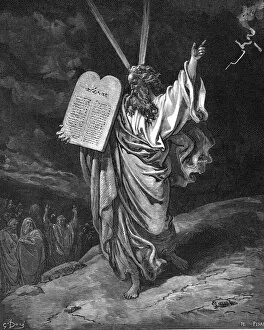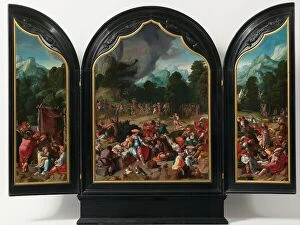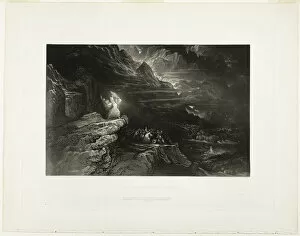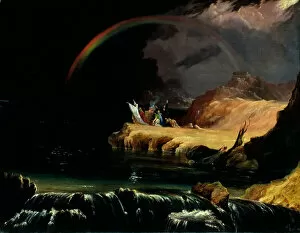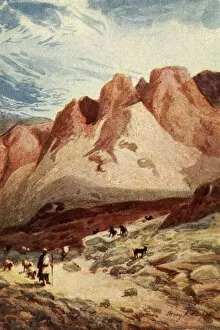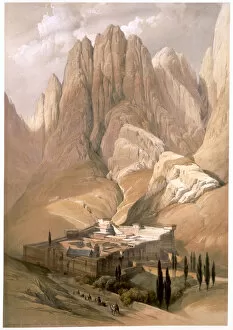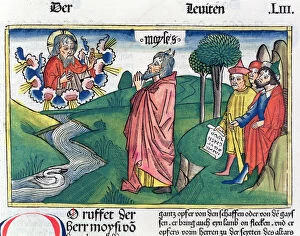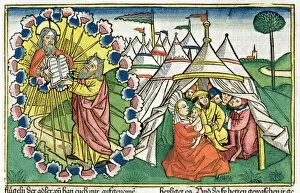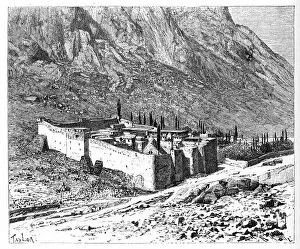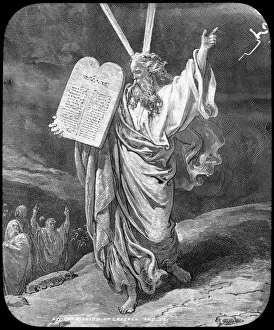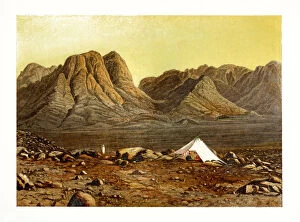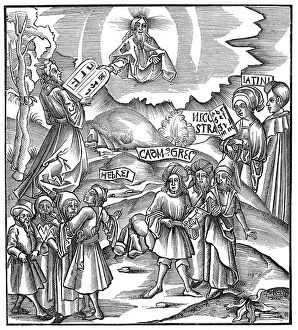Gebel Musa Collection
"Gebel Musa: The Sacred Mountain of Moses and the Ten Commandments" Gebel Musa, also known as Mount Sinai, holds a significant place in religious history
For sale as Licensed Images
Choose your image, Select your licence and Download the media
"Gebel Musa: The Sacred Mountain of Moses and the Ten Commandments" Gebel Musa, also known as Mount Sinai, holds a significant place in religious history, and is here that Moses received the divine revelation of the Ten Commandments from God. This awe-inspiring event has been depicted by various artists throughout time. In Gustave Dore's 1866 artwork, we witness Moses descending from Mount Sinai with the tablets of the law held high above his head. The intensity and grandeur of this moment are beautifully captured by Dore's intricate detailing. John Martin's 1833/34 illustration titled "Moses Breaketh The Tables" portrays an intense scene where Moses shatters the original tablets upon witnessing his people worshiping idols. This dramatic representation showcases both Moses' anger and his unwavering commitment to upholding God's commandments. Augustin Hirschvogel's 1548 piece, "Moses Receiving the Tablets, " offers a more serene depiction. Here, we see Moses humbly receiving the second set of tablets from a heavenly figure amidst a tranquil landscape. The artist emphasizes reverence and spiritual connection in this portrayal. Simon Julien's 1773 painting titled "Moses on Sinai" focuses on capturing the essence of divine enlightenment through its use of light and shadow. As rays illuminate Moses holding two stone tablets engraved with sacred laws, viewers can almost feel their own souls being touched by this profound encounter. Francis Frith takes us beyond artistic interpretations with his photograph titled "The Written Valley. " Taken around 1857, it provides us with a glimpse into Gebel Musa itself – its rugged beauty serving as a testament to nature's role in shaping our spiritual experiences. The significance extends beyond religious art; it is embedded in historical accounts too. In James Clark and Henry A Harper’s c1924 image called "Mount Sinai.

